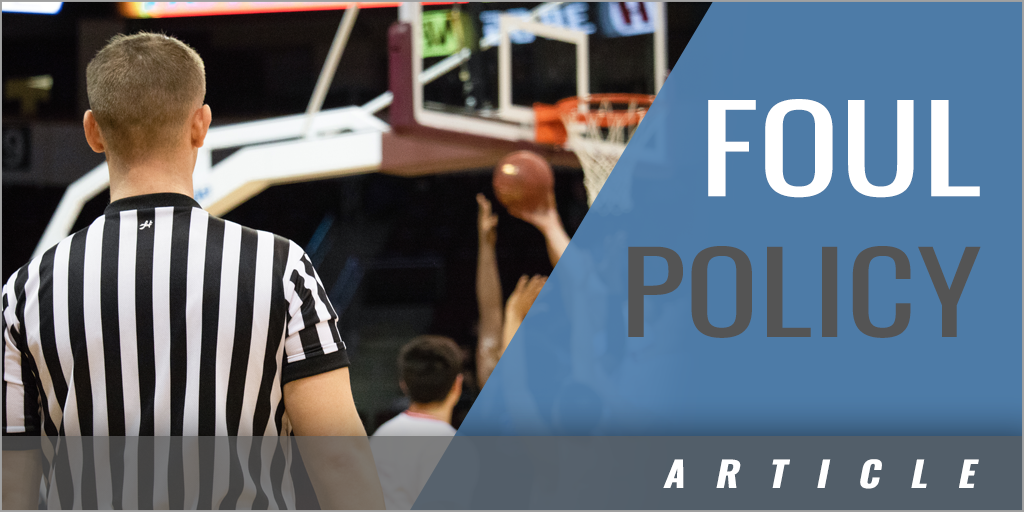|
By: Lee Rose Originally Published in: Winning Basketball Fundamentals Provided by: Human Kinetics As a college student, I officiated intramural basketball games as part of a class assignment. I learned firsthand that refereeing is difficult. Each game has its own rhythm, and trying to guess how the game will be officiated is strictly hit and miss. Coaches and players must get a feel for how the game is being officiated, and coaches need to help their players understand that they must adjust their game to the way that it is being officiated. For example, if officials are allowing rough play and lots of physical contact, players need to adjust and not complain. Good coaches understand that different officiating styles are part of the game, and they have their teams prepared to adjust accordingly. Fouls are inevitable, so planning makes sense. Our foul policy came from my observations of how Coach Dean Smith substituted his players. I have no knowledge personally how deeply rooted this was in his philosophy, but for me, substituting on the first, second, and fourth fouls and involving back-up players in the process was a vital part of our game plan. In this policy, the coach should have a designated substitute for each starter. When the first foul on a starter occurs, the predetermined substitute should report immediately to the scorers' table and replace the starter. This approach should be clearly understood, and the substitute has the responsibility of being prepared to enter the game. After the substitution policy is in place and each starter has a backup, the reserves know from the opening tip that they should put themselves into the game rather than wait for the coach to do it. Each sub should also be aware that the starter may return to the game on the next dead ball. Alternatively, the sub might play for a longer period. The basic reason for this early substitution policy is to prevent a player from picking up two quick fouls. Many times players commit an offensive foul, get frustrated, and immediately commit a foul on defense. Such a policy erases this potential problem. This policy also helps keep all backups mentally involved in the game from the opening tip, and it eliminates emotion from the decision of the coaching staff to pull the starter. For my teams, this first-foul substitution policy was an established part of the game plan. The entire team accepted this procedure. This policy applies to the second foul in the same manner. But the second foul has greater consequences because it is important that a starter begin the second half with no more than two fouls. Thus, after the second foul in the first half, the starter should know that he will not play again until the second half. This part of my policy always took some persuading! Players believe that they can play without committing a third foul, but basketball is a game of reactions and emotions, and the role of the coach is to try to have the best players on the floor at the end of each game. On a player's fourth foul, the back-up substitute should again insert himself into the game immediately (unless the player is told to wait). Never was this used more effectively than when my Purdue team played Duke in the championship of the Mid-East Regional tournament in 1980. Joe Barry Carroll, our 7-foot (213 cm) All-American center, picked up his fourth foul with about six minutes to go and with our team holding a 7-point lead in the game. His freshman backup, 6-foot10 (208 cm) Ted Benson from Atlanta, reported to the scorers' table. With our lead, we wanted to work the clock down to where we could put Joe Barry back into the game with about three minutes to play. We had to control at least three possessions to eat up enough time for the plan to work. The college game had no shot clock at the time, so our instruction to the team was to run our control offense (the LA offense guard to forward, reset), moving through the sequence at least twice on each possession before looking for a shot. Brian Walker, our savvy point guard, was in control and did an excellent job with this strategy. Brian started the play with the guard to forward pass. Then he cut through to the far corner, where the ball ended up back in his hands. After he received the ball in the corner, he dribbled out and restarted the offense. The only way that Duke was going to get the ball was to foul us. This decoy was not immediately apparent to them. Our plan worked, and we won the game, 68-60. Zone defenses can be effective when trying to protect players and keep them in the game. Whenever one of our players had four fouls and we could not afford to have him leave the game, we usually went zone and placed him in the zone's least vulnerable spot, where he was less susceptible to picking up a foul on a drive or rebound. In Joe Barry's case, that meant that he became a wing player in our 2-3 zone rather than play in the middle. But if a guard picked up a fourth foul, we would usually go 1-3-1 and put him on the baseline. |






